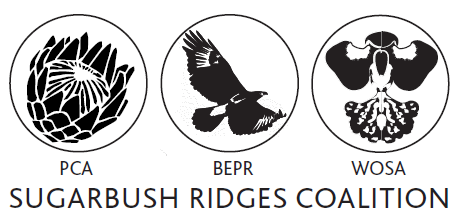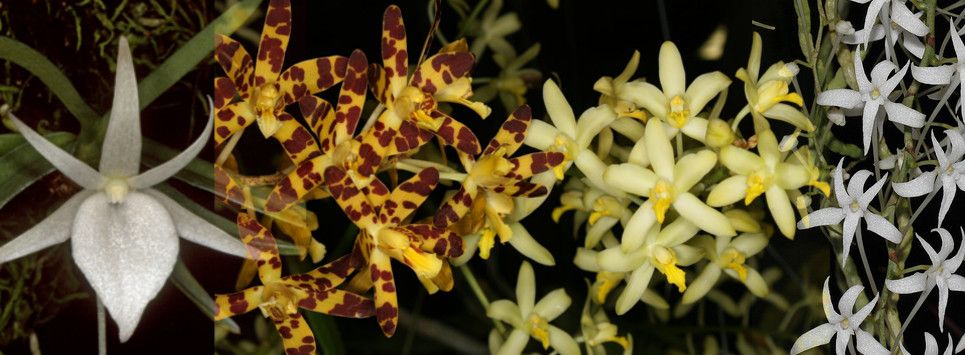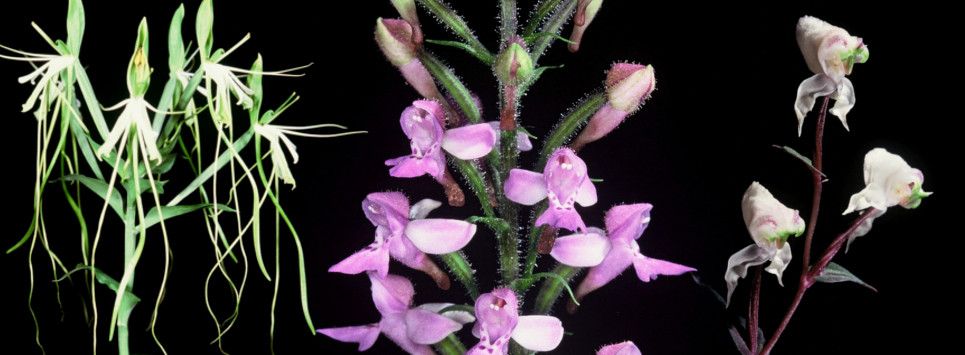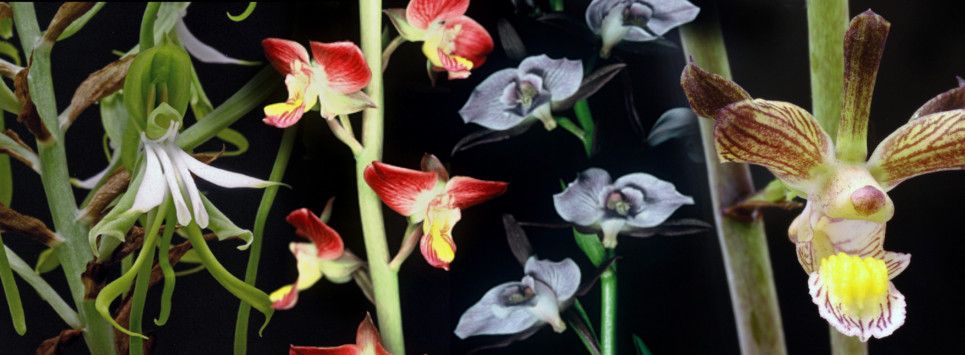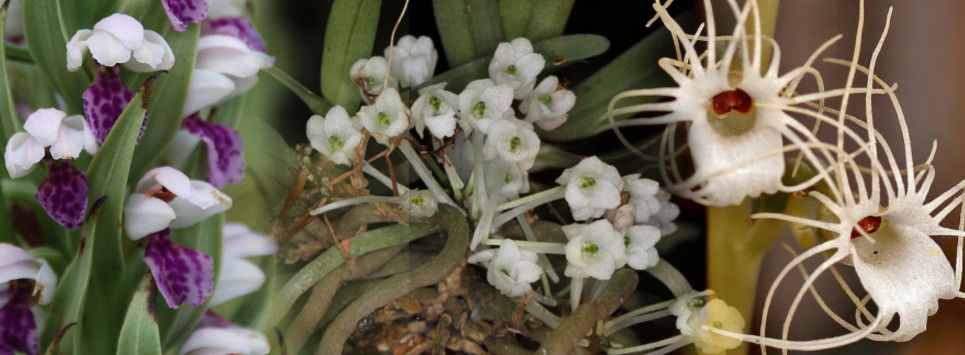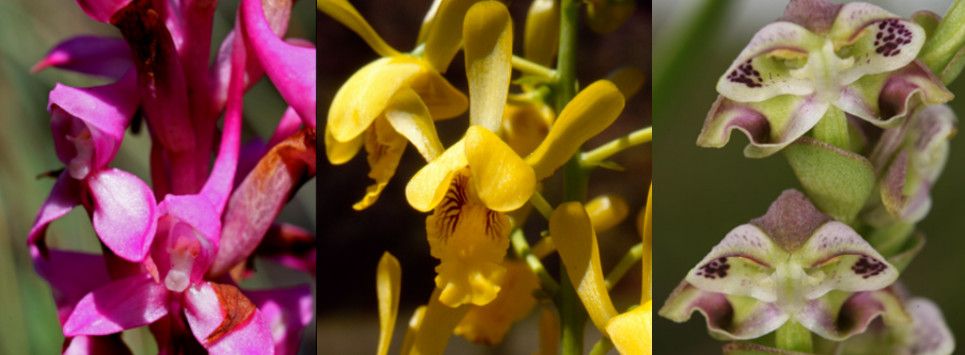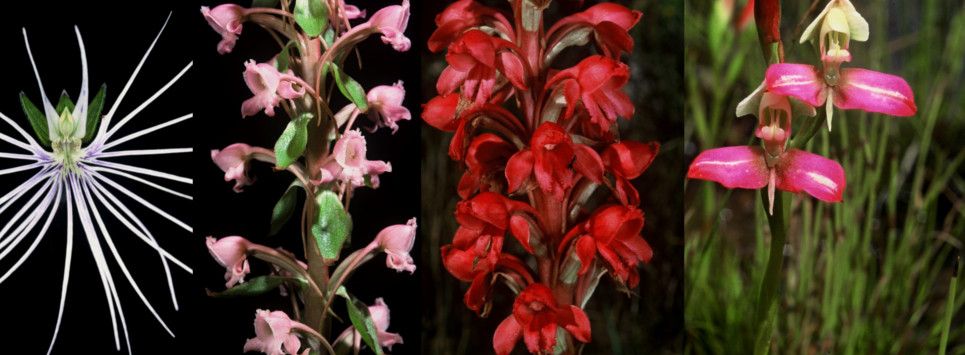
Welcome to WOSA
Very little is known about indigenous orchids by the public who are largely unaware that there are just under 500 species of which 45 are endemic (only occur in South Africa). Very little research has been carried out regarding ecology, conservation and propagation although a number of species have become extinct and habitat destruction is progressing at an alarming rate. Up until now there has been no attempt to address these issues on a National scale and Provincial legislation and cooperation is fragmented. Only through a focused National integrated effort that engages the public and all roll players will survival of orchids be assured.
Eulophia - 3 Gauteng Early Flowering species
It is not commonly known that the orchid family is one of the largest on the planet, numbering some 25 000 species of flowering plants. Of these 466 occur in South Africa alone. It does not appear that many people know that there are some 40 orchid species recorded in and around Johannesburg and Pretoria.
About 90% of all the world's orchids grow as epiphytes (air plants) in trees in the tropical areas where temperatures are warm and constant and the humidity is high.
Gauteng Eulophia species plus a Disa and a Satyrium
Eulophia ovalis, Disa aconitoides, Satyrium cristatum
This article will describe the Eulophia ovalis (pink flowers), the distinctive and fairly rare Disa aconitoides and a version of the fairly widespread Satyrium cristatum. There are in fact 4 species each of Disa and Satyrium that have been recorded historically in Gauteng, but those covered in this article are the only species that still appear to be locatable.
Read more: Gauteng Eulophia species plus a Disa and a Satyrium
Two more early flowering Eulophias and the only winter flowering orchid
In my first article, I dealt with three of the earliest flowering orchids, all Eulophias. In this article, I will cover a further 2 early flowering Eulophias and for the first time, a Bonatea. The Eulophias hereroensis is distinctive due to having 3 erect sepals resembling rabbit ears. The Eulophias streptopetala has pseudobulbs that are partially above the ground (similar to a Cymbidium) and large pleated leaves. The Bonatea porrecta is unique in that it flowers from late in June, when the leaves have already withered. As before, all are terrestrial orchids (grow in the ground).
Read more: Two more early flowering Eulophias and the only winter flowering orchid
Three Rare and Endangered Orchid Species from Gauteng
This article will feature 3 of the more rare species growing in our area, being the Holothrix randii, with it's distinct spidery appearance, Brachycorythis ovata (4 species from this genus have been recorded historically in Gauteng) and Eulophia cooperi, which is endemic to Gauteng and in to south western Mpumulanga. As with all orchids in Gauteng, these 3 species are terrestrial orchids (grow in the ground).
Read more: Three Rare and Endangered Orchid Species from Gauteng
Note that this document only contains a summary of the relevant Ordinances, Acts and Regulations and has no legal status. It has been prepared to give a brief overview of the legislation governing the indigenous orchids in Gauteng. For the exact wording refer to the full copy of the Ordinance, Act or Regulation published in the Government Gazette. These documents can be also obtained from the Provincial Administration.
Note that this document only contains a summary of the relevant Ordinances, Acts and Regulations and has no legal status. It has been prepared to give a brief overview of the legislation governing the indigenous orchids in Gauteng. For the exact wording refer to the full copy of the Ordinance, Act or Regulation published in the Government Gazette. These documents can be also obtained from the Provincial Administration.
Mpumalanga Nature Conservation Ordinance (Ord. 12 /1983)
1. Collection of indigenous orchids
No person shall collect any indigenous orchid unless he or she is in possession of a valid collecting permit from the Provincial Administration. Furthermore written permission to collect such indigenous orchids from the landowner must accompany the permit application.
Exceptions to this ruling are: the landowner may pick the flowers of an indigenous orchid on his or her property. This includes collecting indigenous orchids from land specifically set aside for the purpose of cultivating these protected plants or from land that is to be used for agricultural or housing purposes.
2. Buying and selling indigenous orchids
No person shall sell any indigenous orchid unless he or she is in possession of a valid selling permit from the Provincial Administration. No person shall buy an indigenous orchid unless the seller has a valid selling permit.
3. Donation of indigenous orchids
No person shall donate an indigenous orchid to another person without furnishing the recipient with a written document reflecting the following:
a) The full name and address of the donor and recipient.
b) The number and the names of the species of indigenous orchids donated.
c) The donation date.
d) The manner in which the donor came into possession of the plant.
e) The donor's signature.
4. Export and import of indigenous orchids
No person shall import any indigenous orchid into or export any indigenous orchid from Gauteng without a valid export or import permit from the Provincial Administration.
5. Conveyance of indigenous orchids
No person shall convey any indigenous orchid unless he or she has obtained a permit to do so previously or if the plant was bought legally or received as a donation. In both latter cases the person must be in possession of documentation proving that the plants were legally acquired.
CITES
CITES stands for the Convention for the International Trade in Endangered Species. The meeting at which the CITES agreement was drawn up was held in 1974. Various countries, including South Africa, are party to the Convention and thus bound to the legislation concerning the international trade in endangered species.
Species of plants and animals are categorised in three different appendices:
- Appendix I contains all species immediately threatened by extinction.
- Appendix II contains all those species that might become endangered if commercial trade is allowed. This includes all South African indigenous orchid species.
- Appendix III contains plant and animal species of which trade is to be monitored.
The species listed in these appendices may be up- or down listed depending on the condition of wild populations.
Indigenous orchid species that are to be exported to another country require valid CITES documentation. Without CITES documentation, the plants can be confiscated by the authorities of the country into which they are being imported. CITES documentation will only be provided if the owner of the plant can prove that it was obtained in accordance with the provincial legislation and the grower is registered as a flora grower with the relevant provincial authority. Permit and CITES applications must be done well ahead of time. Further requirements for the export of indigenous orchids are as follows:
1. Artificially raised seedlings in flask
No CITES certificate is required.
A phytosanitary certificate is required according to the regulations of the country that the flasks or plants are being sent to. Write to the country of destination well ahead of time to find out what their requirements are. These requirements are presented to the Directorate of Plant and Quality Control under the Department of Agriculture in the respective Province. Phone the Directorate beforehand and arrange for the inspection of the flasks. The phytosanitary certificate is issued by the Directorate on completion of the inspection.
An export permit is required as stipulated by the local nature conservation authority.
Inform the recipient so that he or she can obtain import permits according to the regulations of the country of destination if required.
2. Artificially raised plants out of flask
A CITES certificate is required for species and hybrids and can be applied for from the local nature conservation authority.
A phytosanitary certificate is required according to the regulations of the country that the flasks or plants are being sent to. Write to the country of destination well ahead of time to find out what their requirements are. These requirements are presented to the Directorate of Plant and Quality Control under the Department of Agriculture in the respective Province. Phone the Directorate beforehand and arrange for the inspection of the flasks. The phytosanitary certificate is issued by the Directorate on completion of the inspection.
An export permit is required as stipulated by the local nature conservation authority.
Inform the recipient so that he or she can obtain import permits according to the regulations of the country of destination if required.
National Environmental Management: Biodiversity Act (10/2004) & TOPS regulation
In addition to the above the regulations as stipulated in the NEMBA or National Environmental Management: Biodiversity Act (10/2004) and TOPS regulation (Threatened or Protected Species) must be adhered to.
Currently none of the indigenous orchids listed for Gauteng are listed as threatened or protected in NEMBA (10/2004) Notice 389 of 2013 published on 16 April 2013.
References:
Wodrich, K.H.K., 1997. Growing South African Indigenous Orchids. A.A. Balkema Publishers, Rotterdam.
Note that this document only contains a summary of the relevant Ordinances, Acts and Regulations and has no legal status. It has been prepared to give a brief overview of the legislation governing the indigenous orchids in Gauteng. For the exact wording refer to the full copy of the Ordinance, Act or Regulation published in the Government Gazette. These documents can be also obtained from the Provincial Administration.
Western Cape Nature Conservation Ordinance (Ord. 12 /1983)
1. Collection of indigenous orchids
No person shall collect any indigenous orchid unless he or she is in possession of a valid collecting permit from the Provincial Administration. Furthermore written permission to collect such indigenous orchids from the landowner must accompany the permit application.
Exceptions to this ruling are: the landowner may pick the flowers of an indigenous orchid on his or her property. This includes collecting indigenous orchids from land specifically set aside for the purpose of cultivating these protected plants or from land that is to be used for agricultural or housing purposes.
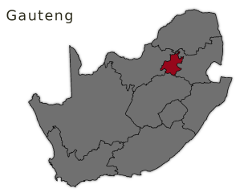 Orchids in Gauteng
Orchids in Gauteng
- Introduction
- Species List
- Species Flowering Months
- Red List Endangered
- Orange List Threatened
- Credits
Wild Orchids of Southern Africa - Is a working group with the aim of promoting knowledge of the indigenous orchids and protecting their habitats by actively engaging with landowners, developers and Nature Conservation officials.
Although many people assume that orchids occur only in tropical areas, South Africa boasts an impressive diversity of orchids. Approximately 56 species of orchid occur within Gauteng's borders alone - some are extremely common, whereas others have only been recorded a handful of times or only once. The typical habitat of Gauteng's orchids is Bankenveld grassland - a biome that has suffered from uncontrolled development, pollution and public ignorance of its ecological importance. In terms of diversity, Bankenveld grassland is the second most diverse biome in the country after the Cape Floristic Region and as such deserves to be protected and appreciated.
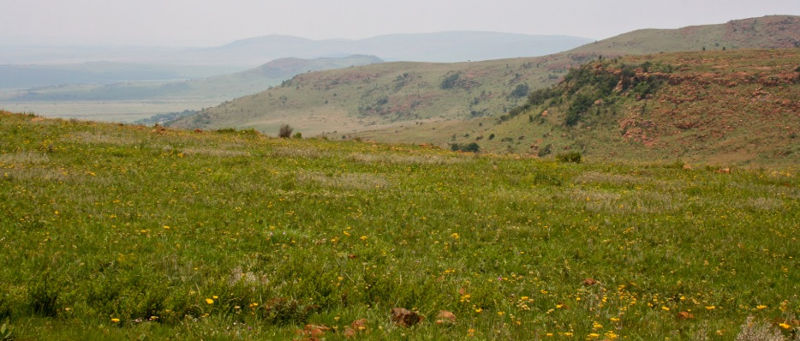
The orchids that occur in Gauteng are terrestrial deciduous orchids which means that they grow in a similar manner to bulbs - they are dormant during the dry, cold time of the year and only emerge from the ground when Spring arrives.
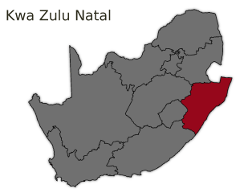 Orchids in KwaZulu-Natal
Orchids in KwaZulu-Natal
- Introduction
- Species List
- Species Flowering Months
- Red List Endangered
- Orange List Threatened
- Credits
The province of KwaZulu Natal falls within the summer rainfall region of South Africa with a wide range of topography, ranging from the top of Drakensberg at over 3000 meters above sea level down to the sub-tropical coastal belt. This has created a wide range of habitats ranging from Alpine grass and scrub down to grassland, open savannah and finally subtropical coastal forest. As a result a correspondingly wide range of orchid flora can be encountered.
The grassland areas of the KZN interior are home to many terrestrial orchids, which survive as subterranean bulbs, dormant in winter and growing and flowering in the summer season.
The river valleys and coastal belt are home to bush and forest, which support a range of epiphytic (tree-dwelling) or lithophytic (growing on rocks) orchids and orchids which inhabit the forest floors. All in all, a total of about 180 terrestrial and 44 epiphytic orchid species have been recorded for the Province (Johnson & Bytebier, 2015).
KZN is fortunate to have a number of fairly large conservation areas. The most notable are the uKhahlamba-Drakensberg Park, the Hluhluwe–Imfolozi Park and the iSimangaliso Wetland Park.
The uKhahlamba-Drakensberg Park is about 2,428 km2 in extent and stretches some 150 km along the eastern border with Lesotho. The Hluhluwe–Imfolozi Park consists of 960 km² of hilly bushveld located in central KwaZulu-Natal. This reserve is well known for its efforts in rhino conservation, but also contains a rich floral heritage. The 3320 km2 iSimangaliso Wetland Park spans 280 km of coastline, from the Mozambican border in the north to the Lake St. Lucia estuary in the south. It consists of major lake and estuarine systems, most of South Africa’s remaining swamp forests and some of the world’s highest vegetated coastal dunes. In this pristine environment, tropical orchid species found more commonly north of our borders occur. KZN also boasts a number of smaller provincial, municipal and private conservation areas.
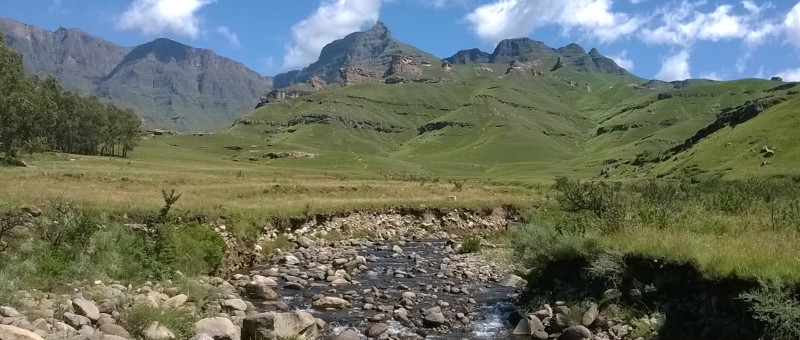
Unfortunately, outside of the formal conservation areas, the environment has suffered the same ravages as elsewhere in South Africa, viz. bad farming practices, habitat destruction, agriculture and deforestation, irresponsible development etc.
WOSA was established at the World Orchid Conference in Sandton in 2014 and is leading a National Initiative to conserve and propagate indigenous orchids. In most cases our terrestrial orchids cannot be translocated successfully and we have embarked upon research projects, hopefully to overcome these hurdles.
This website clearly describes our modus operandi in mobilising support in establishing WOSA Chapters countrywide to conserve orchids in their natural habitats, and work towards creating reserves, protected areas and other safe havens in which to translocate plants.
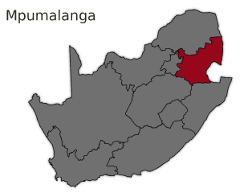 Orchids in Mpumalanga
Orchids in Mpumalanga
- Introduction
- Species List
- Species Flowering Months
- Red List Endangered
- Orange List Threatened
- Credits
Mpumalanga is famous for its numerous Game Reserves including the Kruger National Park. It is in the summer rainfall region with a great variety of habitat of grasslands, wetlands, mountains, river valleys, natural forests and woodlands. The escarpment with the inevitable mist is important for the survival of epiphytic orchids in the harsh African climate and often irregular rainfall and drought.
The natural habitat is shrinking at a rapid rate and this is putting pressure on our orchid resources.
WOSA was established at the World Orchid Conference in Sandton in 2014 and is leading a National Initiative to conserve and propagate indigenous orchids. In most cases our terrestrial orchids cannot be translocated successfully and we have embarked upon research projects, hopefully to overcome these hurdles.
We are fortunate that we have an excellent reserve, the Verloren Valei Nature Reserve, situated near Dullstroom. Over 56 species of terrestrial orchids have been identified growing in the reserve. As a WESSA (Wildlife and Environment Society of South Africa) initiative in 2014 the Friends of Verloren Valei (FVV) group was formed to assist management to turn this into a popular venue for Orchid enthusiasts from all over the country. The main flowering time is from December to March when a number of guided trips are held and visitors can see in excess of 20 species in a one day trip, which is easily accessed from Pretoria and Johannesburg.
This website clearly describes our modus operandi in mobilising support in establishing WOSA Chapters countrywide to conserve orchids in their natural habitats, and work towards creating reserves, protected areas and other safe havens in which to translocate plants.
Other Mpumalanga hotspots are Hazeyview, Barberton, Graskop, Pilgrims Rest, Sabie, the Longtom Pass, the Blyderiver Canyon, Nelspruit, the Songimvelo Nature Reserve, Piet Retief and Wakkerstroom.
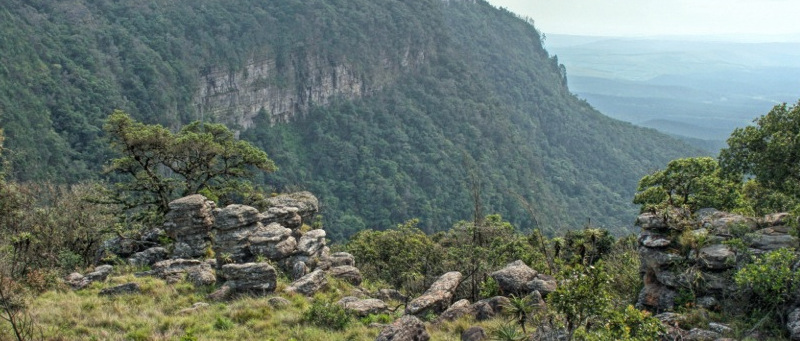
The orchids that occur in Mpumalanga are terrestrial deciduous orchids which means that they grow in a similar manner to bulbs - they are dormant during the dry, cold time of the year and only emerge from the ground when Spring arrives.
 Orchids in Western Cape
Orchids in Western Cape
- Introduction
- Species List
- Species Flowering Months
- Red List Endangered
- Orange List Threatened
- Credits
The Cape Floristic Region (CFR) is found in the Western Cape of South Africa and is famed for its high plant species richness (8 700 species) and its high endemicity. The CFR has also been named ‘the world’s hottest hotspot of biological diversity’. Amazingly, 70% of Cape floral species are found here and nowhere else on the planet, surpassing many tropical forest regions in floral diversity and richness.
The CFR is located at the southwestern corner of Africa, and is an L-shaped area averaging only 100 km in width. It extends about 500 km along the south coast of South Africa from Cape Town to Port Elizabeth, and an additional 250 km northward from Cape Town to the semi-arid Namaqualand. This region experiences a very wet and cold winter followed by a dry summer period, which can lead to drought.
To date, 241 native orchid species belonging to the Cape flora are recognised (with many more likely to be discovered). This is an unusually high number of species for a temperate region, considering the relatively small size of the area. These orchid species have not just merely eked out an existence in this region, but have thrived due to the unusual strategies they have evolved for survival in this harsh environment of ecological extremes. Of the 24 genera occurring in the Cape Floral Region, only 5 genera (8 species) are epiphytic with the majority being terrestrial (19 genera comprising 233 species). The most well-known and rich genera is that of the Disa which has 104 recognised species. Of the Disa genera the most famous species is Disa uniflora, an iconic red flower referred to as the Pride of Table Mountain. Its range is restricted to sandstone mountains, from the west of Hermanus to Table Mountain and northwards into the Cederberg. Disa uniflora thrives in seeps, waterfalls and streamlets in the mountains and has one of the most complex known orchid pollination systems, facilitated by the Mountain Pride Butterfly (Aeropetes tulbagia). Disa uniflora has also become a symbol used by the Mountain Club of South Africa, the Western Province Rugby Team and the Cape Orchid Society.

The Cape Floristic Region has suffered great losses to orchid habitat, particularly on the lowlands of the region, due to overly frequent burning of habitats, urbanisation, poor agricultural practices and infesting alien vegetation. The result is that many orchid species are now lost forever or threatened with extinction. Alarmingly, some three-quarters (1700 species) of all plants in the South African Red Data Book occur in the Cape Floristic Region.
For more information regarding the preservation of South Africa's wild Orchids or if you would like to get involved please email This email address is being protected from spambots. You need JavaScript enabled to view it. or complete this short form Contact Us and we will contact you.
